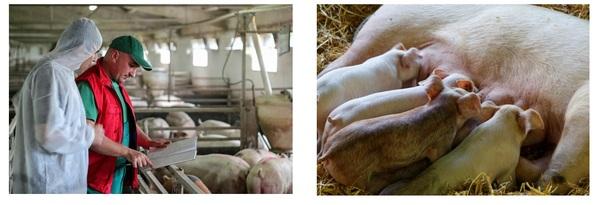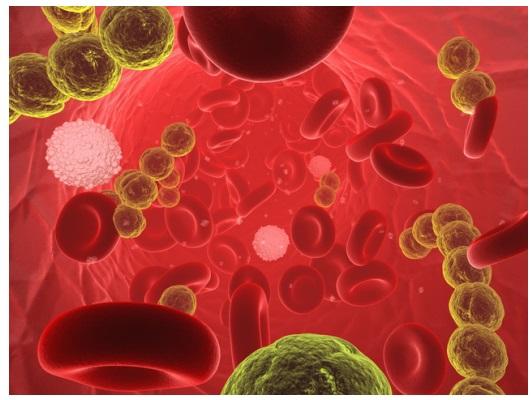
Content sponsored by:
LIPTOSA
Streptococcosis control in swine production
Published: April 15, 2021
By: Ignacio López Paredes, veterinarian, Liptosa

Streptococcosis are diseases caused by different species of the genus Streptococcus and, in the case of swine, mainly due to Streptococcus suis. There are 35 recognised serotypes of S. suis, being the serotypes 2, 1/2, 7 and 9 the most frequently isolated in this species. Infections caused by these Gram-positive bacteria constitute a common problem that deserves special attention in swine production worldwide, not only because of its zoonotic behaviour, but also because of the important economic impact they represent.
Swine are the main reservoir of Streptococcus suis; being in many cases asymptomatic carriers. The natural habitat of the bacteria is mainly the upper respiratory tract (tonsils and nasal cavity), digestive and genital tract.
The transmission of the disease is firstly vertical, from the sow to the piglet, and then transmitted horizontally between piglets in the farrowing units.
The sows, often infected with non-pathogenic serotypes of this bacteria, are healthy carriers in most situations; they transmit the infection to the piglets during farrowing, through vaginal fluids, as well as through skin, saliva and faeces. Horizontal transmission is possible between piglets via contaminated fomites and certain vectors such as flies.
Although Streptococcus suis is a primary pathogen, there are predisposing factors in its appearance and dissemination, such as stress, nutritional imbalances, incidence of other diseases (especially documented in relation to PRRS), sudden changes in temperature, overcrowding, and, in general, poor facilities management.
Disease control. Holistic perspective
Survival of Streptococcus suis is quite variable (it persists in water, dust and faeces). In organic matter and water it can survive for more than a week.
The existence of asymptomatic carriers makes eradication a difficult goal to achieve, making the maintenance of a balanced health status the aim of control mesures.
Historically, the control of this disease has been performed by uisng antimicrobials in sows and piglets, mainly amoxicillin in feed.
Vaccination is another strategy to control Streptococcus suis infections. However, the high variability of species and strains involved and the differences between different locations make this way of control still considered to be remote.
Control measures include: rigorous hygienic and sanitary management around farrowing, maintain an optimal stocking density, ensure that piglets receive the correct amount of colostrum at birth and avoid excessively moist environments, among others.

Liptosa natural solutions in the control of swine streptococcosis
Liptosa has been a leader in the development of streptococcal control strategies in swine, by using nutritional additives. The development of HYGEN PRO STREPT product line marked a turning point in the use of medium chain fatty acids and plant extracts as an alternative to the use of amoxicillin
HYGEN PRO STREPT reduces the infection pressure on farms by minimising the excretion of the pathogen from the digestive tract, but also from secretions produced by other reservoir organs. The products of this line are composed by plants and plant extracts together with mono- and diglycerides of fatty acids, which give the product line an antimicrobial effect against Gram-positive bacteria. In addition, plants provide an important anti-inflammatory and immunomodulatory role within the animal. Among the fatty acids and their glycerides, lauric acid together with monolaurin are the most important in the line. Monolaurin stands out as one of the most effective fatty acids with antimicrobial properties.
Another new feature of HYGEN PRO STREPT is the inclusion of extracts and flavourings that will facilitate the delivery of the active ingredients to other reservoir organs, such as mint, to improve the response against pneumotropic strains.
HYGEN PRO STREPT is available in both premix and liquid presentations to be administered through feed and drinking water. In sows, it helps to achieve total substitution of antibiotics in maternity and reduces the excretion of S.suis, minimising the risk of both vertical and horizontal contamination. In addition, it promotes the control of Clostridium spp and E. coli.
In piglets, its administration reduces the risk of horizontal contamination of S.suis and allows the control of other pathogenic bacteria such as E.coli, Clostridium, etc. HYGEN PRO STREPT also contributes to a better development of the digestive tract and a proper balance of the microbiota.
HYGEN PRO STREPT L combines an effective antimicrobial and acidifying activity with a powerful immunostimulant and antiinflammatory effect.
The liquid application ensures that, in critical phases such as weaning, disease onset, etc., the intake of the different active ingredients is suitable for the management of the disease.
The simultaneous administration of both products, in drinking water and feed, multiplies the success rate, ensuring a greater effectiveness of S.suis control programme, minimising the use of antibiotics and controlling the lost of appetite, so common in young animals with this problematic.
Related topics:
Authors:
LIPTOSA
Influencers who recommended :
Carlos López ToméRecommend
Comment
Share

Would you like to discuss another topic? Create a new post to engage with experts in the community.

.jpg&w=3840&q=75)